The genus Strobilanthes: phytochemistry and pharmacology
Xiao-Ling Zhu,Yang Xu,De-Juan Sun,Hua Li,2*,Li-Xia Chen*
1Wuya College of Innovation,Key Laboratory of Structure-Based Drug Design &Discovery,Ministry of Education,Shenyang Pharmaceutical University,Shenyang,110016,China.
2School of Pharmacy,Tongji Medical College,Huazhong University of Science and Technology,Wuhan,430030,China.
Abstract The genus Strobilanthes belonging to the family Acanthaceae,is mainly distributed in Kashmir,Bhutan,Bangladesh and the Khasi mountains of northeast India and southwest of China.The main purpose of this review is to provide the available information on the phytochemistry,pharmacology and the traditional applications aspects of the genus Strobilanthes,and provides trends and perspectives for the further studies on its chemical constituents.The present review collected the literatures published prior to 2022 on the phytochemistry,and pharmacology of the genus Strobilanthes.The available literatures were excerpted from scientific databases,such as Sci-finder,PubMed,Web of Science,Google Scholar,and CNKI,Baidu Scholar,books,and others.The plants from the genus Strobilanthes have been usually used in some traditional herbal prescriptions,and pharmacological researches in vitro and in vivo revealed that the extracts possessed significant anticancer,antioxidant,anti-inflammatory,anti-allergic activities,etc.To date,the majority of articles mainly focused on the research of crude extracts.However,the data in previous literatures indicated the research potential of this genus in phytochemical and pharmacological aspects.In addition,the further in-depth investigations on the safety,efficacy,as well as the specific chemical composition,stereo-chemistry and structureactivity relationships of pure compounds from this genus are essential in the future investigation.
Keywords Genus Strobilanthes; Acanthaceae;Phytochemistry;Pharmacology
Background
A large number of antibiological,antidiabetic,antihypertensive and antitumor drugs come from natural products,despite the emergence of chemically synthesized drugs,natural products remain the basis and major resource for drug innovation,illustrating the widespread use of botanicals [1].The modern medicines from natural products and herbal remedies are now an integral part of national health systems in both developed and developing countries [2].The genusStrobilanthes,belonging to the family Acanthaceae,contains approximately 350 species globally,which are mainly distributed in Kashmir,Bhutan,Bangladesh and the Khasi mountains of northeast India (at least 46 species in India) [3].About 32 species are recorded growing in the southern China,such as Xizang,Sichuan,Yunnan,Guangxi and other places.In recent years,increasing studies have focused on the phytochemistry and pharmacology of genusStrobilanthes.According to previous studies,the plants of the genusStrobilantheshave a wide range of therapeutic potential and clinical value.For example,they have antitumor,antimicrobial,antioxidant and anti-inflammatory activities and so on.At present,more than 209 chemical components such as phenolic compounds,flavonoids,volatiles compounds,phytosterols,terpenoids and other compounds,have been identified and isolated from the genusStrobilanthes[4-8].
Up to date,as far as we know,there is no systematic review study in the literature that provides a comprehensive assessment of the currently available data related to the pharmacology and phytochemistry ofStrobilanthesplants.So,it is essential to systematically sum up the information on the above-mentioned aspects,and provide the scientific connotations and basis for the future research,in order to promote the development and utilization of this vital medicinal resource.
Materials and methods
The present review collected the literatures published prior to 2022 on the phytochemistry,and pharmacology of the genusStrobilanthes.The available literatures were excerpted from scientific databases,such as Sci-finder,PubMed,Web of Science,Google Scholar,and CNKI,Baidu Scholar,books,and others.
The classification of Strobilanthes genus
Acanthaceae includes approximately 4000 species and encompass a range of morphological diversity,habitats,and biogeographic patterns.Although they are important components of tropical and subtropical habitats worldwide,inadequate knowledge of the family’s phylogenetic framework has impeded comparative research [9].In 1867,Anderson firstly used ovule number to separate morphologically similar species of this genus.However,Anderson’s system has been criticized as highly artificial and arbitrary.Then according to combinations of macromorphological and pollen characters,Bremekamp radically reclassified the subtribe and dividedStrobilanthessensu Anderson (1867) into 54 smaller genera in 1944.The advantage of this classification method is that it’s a more informative generic classification and overcome the limitations of the Anderson system by describing numerous genera.But 176 species (more than one-third of species recognized at that time) were left unassigned to genera and the majority of newly described genera were small (comprising less than 15 species) or monotypic.In addition to this,there also existed drawbacks such as many generic characters were inaccurately described,and generic boundaries within the subtribe remained ambiguous and the diagnosis of groups remains confused and their morphology uncertain.And his classification is not supported by the studies of the only molecular phylogeny ofStrobilanthes[10,12].A third approach that all genera were united within an expandedStrobilanthessensu lato (s.l.) was proposed by Terao in 1983.In Terao’s classification the circumscription of the Strobilanthinae and ofStrobilanthess.l.are identical.But Terao’s classification simply transferred many of the problems previously identified with the Bremekamp system from the generic to the infrageneric level.Based on analysis of morphological data (32 characters) from a limited sample of southern Indian and Sri Lankan species,Carine and Scotland in 2002 demonstrated thatStrobilanthessensu Anderson is paraphyletic,they concluded that the prospect for a new generic or infrageneric classification was limited,given the highly homoplastic nature of morphological characters within the subtribe.With the further study of the genus,Elizabeth C.Moylan et al.utilized Chloroplast trnL-F sequence data,nuclear ribosomal internal transcribed spacer (ITS)sequence data,and morphology to analyze phylogenetic relationships among members of the subtribe Strobilanthinae in 2004,and all analyses indicate thatHemigraphis,Sericocalyx,andStrobilanthesare nonmonophyletic.Consequently,a single expanded genusStrobilanthessensu lato is proposed at the level of the wellsupported and monophyletic Strobilanthinae [12].The classification of family AcanthaceaeStrobilanthesgenus has been controversial all the time.Historically,there has long been disagreement about whether the genus might be adopted on a broad or narrow circumscription [10].So in this review we will describe the species reported in this genus in a broad sense.
Phylogenetics analysis of Strobilanthes genus
Different methods have been used to discriminate plants from theStrobilanthesgenus,including morphological investigation,chemical analysis,and gene identification[13].DNA barcoding is one of the most promising methods[13].In previous studies,the phylogenetics analysis showed the monophyly of Acanthaceae [9].Molecular phylogeny shows that the periodical behavior ofStrobilanthes flexicaulishas locally evolved from the polycarpic behavior ofStrobilanthes tashiroi,these two plants are closely-related sympatric understory plants of the genusStrobilanthesspecies (Acathaceae),in warmtemperate,overwintering evergreen forests in Japan [14,15].The complete chloroplast genome (cp genome) ofStrobilanthes biocullatawas reported for the first time by Qin Wang et al.,they foundStrobilanthes bantonensisandStrobilanthes cusiawere closer toS.biocullata.By sequencing the complete chloroplast genome sequence ofS.bantonensisto preform in-depth comparative genetic analysis of the twoStrobilanthesspecies,the phylogenetic analysis showed thatRuellia simplexis closely related toS.cusia,S.bantonensis[16].Liu Fang et al.sequenced and assembled the cp genome ofStrobilanthes tonkinensis,and the phylogenetic analysis indicated thatS.tonkinensisis closely related toS.cusiaandS.bantonensis[18].The cumulative data will continue to contribute to our understanding of the chloroplast genome feature ofStrobilanthes.For the complexity ofStrobilanthesgenus,many studies are conducted.
Since the electrochemically active components in plants reflect the differences at the gene level to some extent,the obtained electrochemical fingerprints can be further used for the discussion of phylogenetics.Fan et al.selected 12 species fromStrobilanthesand 2 exotaxa for analysis using the fingerprints of electrochemically active molecules in plant tissues,and the result indicated that the 14 species were divided into three main clades,an outlier ofS.cusiawas observed.And the phenomenon of outlier ofS.cusiamay provide the scientific basis for today’s division ofS.cusiaintoBaphicacanthusgenus.However,no conclusions have been drawn as to the further causes,so further research is needed on the characteristics of this genus in the future [19].Sequencing the chloroplast genome of plant species is the way to help future taxonomic,evolutionary,phylogenetic and bioprospecting studies of the sizeable genus and understand the evolutionary history of these plants [20].Hence,the phylogenetics analysis of theStrobilanthesgenus remains to be further explored,and the cumulative data will continue to contribute to our understanding of the feature ofStrobilanthesgenus.
Plants of Strobilanthes genus
The species ofStrobilanthesgenus are summarized basically on name,distribution,medicinal parts and bological activity presented in Table S1 and the details of some species are described below.
Strobilanthes crispus (Acanthacea)is a flowering shrub traditionally used as a folk medicinal plant in Indonesia and Malaysia [20],which is found in southeast Asia and distributed throughout the regions of Madagascar to the Malay Archipelago [22,23] and easily found in forests,river banks and fields [24].This plant is locally known as daun “picah beling” in Jakarta or “enyoh kelo”or “kecibeling” or “kejibeling” or “ngokilo” in Java and also “pecah beling” or “bayam karang” or “pecah kaca” or“jin batu” in Malaysia [4].In addition,in ChinaS.crispusis also famous as ‘Hei Mian Jiang Jun’,or to say ‘Blackfaced General’ to the local Chinese community [20].At present,there are many reports aboutS.crispus,studies so far have found thatS.crispushas anticancer,antidiabetic,anti-inflammatory,anti-obesity,anti-oxidant,enzyme inhibition activities [25],but most of these activities are about theS.crispusextracts.Although there are studies that show 14-day oral administration osS.crispusethanol leaves extract was safe to be consumed in female rats without affecting the liver and kidney functions [26],toxicity studies ofS.crispushave lacked to date,especially studies to establish an effective dose and its long-term toxicity in vivo.
Strobilanthes ciliatus Nees (Bremek.)is a traditionally known medicinal potent plant belonging to the genusStrobilanthes.In recent years,this plant has attracted more and more attention because of its extensive secondary metabolites and various pharmacological activities.S.ciliatusis a shrub of 1-2 meter height.It is found distributed in southern part of India and Andaman islands,mostly found in Western ghats,wet forests and plane areas[27].Itswhole herb is effective in treating different diseases,such as fever,inflammation,rheumatism,sciatica,claudication,lumbago,chest tightness,vitiligo,skin disease,and so on.Therefore,it is of great significance to further study the compounds and pharmacological activities ofS.ciliatus[28].
Strobilanthes callosus Nees (synonym: Carvia callosa(Nees) Bremek)is a shrub found chiefly in the low hills of the western Ghats on the west coast of India.Its standard Hindi name is Maruadona,in Marathi and other local dialects and in the neighbouring state of Karnataka,the shrub is locally known as Karvi,sometimes written as Karvy in English.The shrub was first described scientifically in the 19th century by Nees [29].It is a large shrub of 6 to 20-ft height and 21/2inches in diameter and its branches are often warty.Leaves are crenate and rough in nature sometimes much larger (~7.3 inches) and produce purple-colored flowers after 7 or 8 years [30].Its roots,stems and leaves all have certain pharmacological activities including cough,inflammation and arthritis [29].To continue search for useful new oils,M.S.Ahmad et al.studied herbaceous seed oils of seven species in six botanical families,S.calloscuswas one of them.The oil content of this plant is 4.7 percent [30].
Strobilanthes biocullatais a plietesial species endemic to China.It is found in Hunan,Guangxi,and Guangdong provinces,where it grows on rocks along streams.It actually belongs to the group of species placed by Bremekamp in Semnostachya Bremek.S.biocullatais different from all other species by two swollen bulges in its bracts on the dorsal surface and its plietesial life history which flowered gregariously after growing eight years and then died [32].There is little research on this plant as regards its pharmacological activity so far.
Strobilanthes ixiocephala Benthalso known as thelepaepale ixiocephala (Benth) Bremek,commonly known as Waiti (Mar),is a small shrub found in Konkan,Deccan and Kananl in India.It is a very common,abundant and Kanara plant,distributed in a large area about half way down the St.Xavier Gorge,500 m above sea level,located in the Brahmagiri Hills of Nashik.It is found flowering every seven years.Twigs with flower heads produce an essential oil with a fresh camphor smell.Glandular hairs secrete the most penetrating and long-lasting odors [33].
The current research on the plants ofStrobilanthesgenus is not particularly in-depth,therefore,the key information about the botanical aspects and activities ofStrobilanthes plantsstill needs to be carefully investigated to provide a base for further development and clinical use.
Traditional uses and other applications
Plant ofStrobilanthesgenus has a wide range of applications,not only in medicine,but also in physical chemistry,cosmetic,biological field and so on [52].Due to the wide range of pharmacological activities of this genus,together with other plants they are used to make preparations,such as antioxidant formulations [54].A preparation made fromStrobilanthes heynianusandZingiber offcinaleis an ayurvedic preparation called Sahachardi Kashayam,which can be used to treat diseases like epilepsy,paraplegia,backache,hemiplegia,palsyetc[54] and has good antioxidant potential [55].Polyherbal formulation (PHF),made from Mimusopselengi,Strobilanthesbarbatus,Indigoferazollingeriana,Dilleniaindica,has anti-inflammatory activity [57].S.ciliatusis a strong aromatic plant widely used in ayurveda in the medicine ‘Sahachara’ and it is also believed to be used in other Indian medical systems such as Sidha and Unani [28].Championella japonicais the whole grass ofStrobilanthes japonicus,mainly produced in Sichuan,and often used as traditional Chinese medicine“Lycopus lucidus”,with the function of removing blood stasis and flowing water,relieving liver and dispersing depression,and treating other diseases.S.tonkinensisis usually used as spices which has a distinctive fragrance similar to glutinous rice and natural herbal tea.It has antioxidative activity because it contains amounts of squalene.
The leaves ofS.crispusare usually boiled in water and used in folk medicine with blood-pressure lowering,antidiabetes,anticancer and diuretic properties and have been scientifically proven to have high antioxidant activity,anti-AIDS and anti-cancer properties [22,34,57].Based on its traditional use,the plant is also taken as tea or used it to mix with other herbs,such as nutraceuticalsS.crispusherbal tea (fermented and unfermented) and this property makes it commercial [20,58,60].S.crispusis not only used in medicine,but also in physical chemistry and other fields.For example,RI Ashna et al.studied on ZnO-La2O3composite synthesis using green synthesis method,they usedS.crispus(B.) leaf extract (SCBE) as a weak base source and capping agent to synthesize ZnO-La2O3composite.And subsequent verification showed that the composite has good performance and photocatalytic activity [61].Similarly,Yoki Yulizar et al.usedS.crispus(B.) leaves extract and designed La2CuO4-decorated ZnO(La2CuO4is a perovskite-like material with a suitable bandgap for the sun spectrum [62]in situnanoparticle fabrication to improve photocatalytic activity for malachite green degradation [63].Che Nur Mazadillina Zahari et al.conducted a research on extracting glycosaminoglycan (GAG),a type of sugar that widely applied in diverse fields such as cosmetics,supplementary diet,food,and textiles,fromS.crispus,and its total sulfated GAG in crude yield is 9.68 ± 0.01μg/mg [64].
In the last few decades,remarkable success has been achieved in the production of second metabolites by plant cell cultures.To expand the research work,Sue L.Smit et al.did a preliminary study onStrobilanthes dyerianaMast(Acanthaceae).They found that a callus line ofStrobilanthes dyerianaMast could produce the anthocyanins in the presence of indole-3-acetic acid (IAA)as the medium growth factor.These anthocyanins are same to those produced by the intact plant [64].Noboru Hiraoka studied the metabolism of selected phenyl-ethylamines and related compounds by plant cell suspension cultures,and theS.dyerianusculture metabolized 2-(pmethoxyphenyl) ethylamine to 2-(p-methoxyphenyl)ethyl-3-D-glucopyranoside [66].Additionally,researchers have developed cultivar ofStrobilanthes anisophyllusof this genus,and named it ‘Lankveld13’ [67].Besides,Strobilanthes flaccidifoliousNees is one of the very important dyes yielding plant and plays a key role in indigenous handloom industry.In short,the application prospect ofStrobilanthesplants is very wide,so it is necessary to conduct a more comprehensive and in-depth study on them.
Phytochemistry
Strobilanthesis a genus of perennial flowering shrub and herb,the flowering plants of this genus belong to the Acanthidae family.The chemical constituents of the genusStrobilantheshave been extensively studied since the early 1990s.Up to now,more than 209 compounds have been isolated from this genus,including flavonoids,terpenoids,etc.These compounds were mainly extracted with EtOH/MeOH,and then were separated by some conventional methods,such as ODS column chromatography,silica gel column chromatography,Sephadex LH-20 column chromatography,HPLC,etc.The structures of the compounds were delineated with the aid of spectroscopic techniques such as IR,GC-MS,MS,1H and13C-NMR and also by comparison with the previously published data.
Phytochemical screening that aims to provide an overview of the class of compounds contained in plants is a method of bioactive compounds identification that is unknown in plant extracts through qualitative analysis.Many studies have been done on the phytochemical preliminary screening of theStrobilanthesgenus,such as Q Fardiyah’s study,on Several medicinal plants extract from Indonesia [68,69].Using a systematicin vitroanticancer activity-guided approach,Baraya et al.identified an activeS.crispussubfraction,termed F3(major constituents of F3 were identified as lutein,131-hydroxy-132-oxo-pheophytin a,campesterol,stigmasterol,β-sitosterol,pheophytin a and 132-hydroxy-pheophytin a),their study showed that F3 and specific major components ofS.crispusdemonstrated antitumor effects against murine 4T1-induced breast cancer [70].
The phytochemical screening showedS.ciliatuscontained the flavanoids,phenolic compounds,tannins,steroids,glycosides and triterpenoids and the phytochemical analysis revealedS.sessiliscontains steroids,flavanoids,and cardiac glycosides [53].Maria Cineola Fernandes and Krishnan Sellappan analysed the phytochemical composition of ten plants (leaves and stems)inStrobilanthusgenus,analysis showed that all ten plants had phytosterols and terpenoids in their leaves and stems.S.callosusstems contain a full range of ingredients,including terpenoids,flavonoids,phytosterols,phenolic compounds,fixed oils,carbohydrates,alkaloids,glycosides,saponins,proteins [71].Huang jing et al.isolated and identified compounds 24,27,74 from the whole grass ofStrobilanthes japonicus[51].Peter Weyerstah et al.isolated and identified 22 components from the essential oil ofStrobilanthes auriculatus[7].In this review,the chemical compounds information including the name,source of plant part and identification method of genusStrobilanthesare summarized in Table S2,and their chemical structures are presented in Figures 1-5.
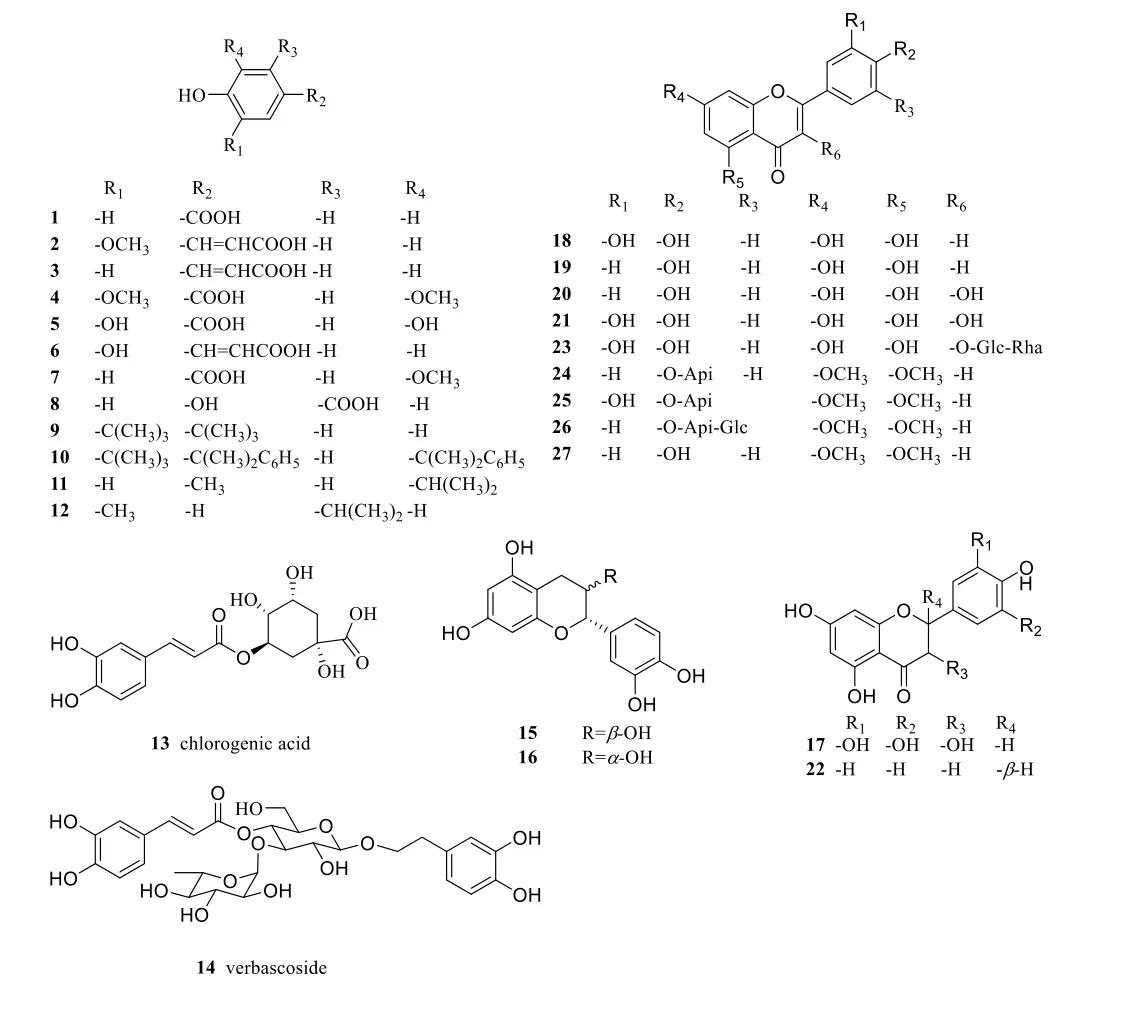
Figure 1 Chemical structures of phenolic compounds and flavonoids from the genus Strobilanthes.
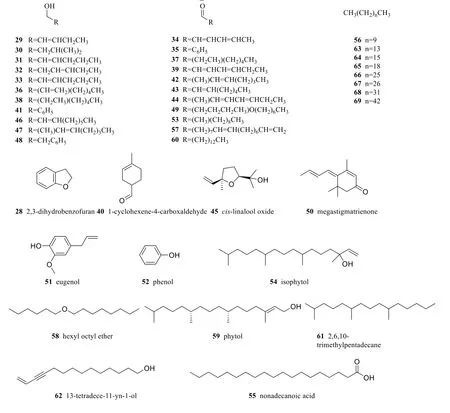
Figure 2 Chemical structures of volatiles from the genus Strobilanthes.
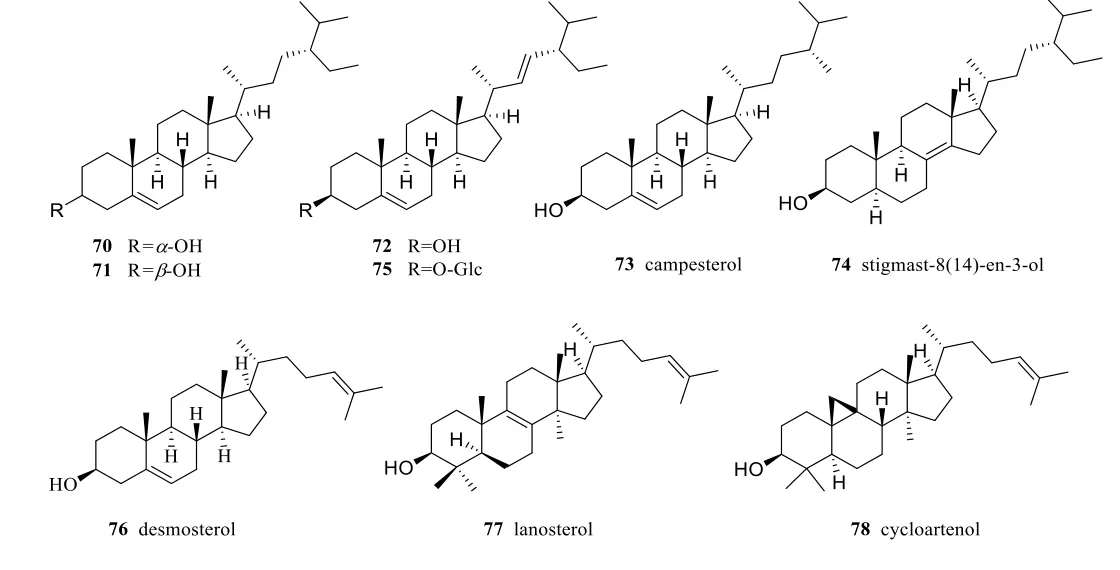
Figure 3 Chemical structures of phytosterols from the genus Strobilanthes.
Phenolic compounds
Fourteen phenolic acids have been identified from the genusStrobilanthes,compounds 1-4,6-8 were isolated and identified by Soediro et al.N.S.Muslim et al.used GCTOF MS isolated compounds 9 and 10.Peter Weyerstahl et al.isolated the compounds 11 and 12 from leaves and stems of plantS.callosusNees.Compounds 5 and 13 were identified by Ali Ghasemzadeh et al.fromS.crispusleaves.H.Hanisa et al.analysedS.crispusin liquid chromatography-mass spectrometry-electrospray ionisation to identify plant active principles.The compounds of interest were separated by chromatography on C-18 column and detected in positive ion mode.The results showed the active principle inS.crispuswas verbascoside,compound 14,which was detected at ion m/z 625.Verbascoside was isolated from methanol extract ofS.crispusleaves extract.It is a disaccharide ester containing a glucose unit linked to rhamnose and forming a glycoside.InS.crispus,in addition to caffeic acid,verbascoside has been reported that it can play a role as an antioxidant,antibacterial and antiviral agent [75,76].Maznah Ismail et al.also identified verbascoside.The detailed chemical structures and references are shown in Table S2 and Figure 1.
Flavonoids
The bioactive flavonoids ofS.crispus(Pecah Kaca) leaves were obtained by using supercritical carbondioxide (SCCO2).Liza et al study also revealed that both soxhlet extraction and SC-CO2extraction can be used to obtain the flavonoids [87].Thirteen flavonoids (15-27) have been isolated and identified from this genus,which are classified to be flavanones (18,19,22,27),flavonols (15-17,20-21),there are also flavonoids in the form of glucosaccharides (23-26).The detailed chemical structures and references are delineated in Table S2 and Figure 1.
Volatiles
Volatile components are also major components of theStrobilanthesgenus.Forty-two (28-69) compounds were isolated from the leaves of plantS.crispusL.by Asmah and Lisa Yen Wen Chua et al.The detailed chemical structures and references are described in Table S2 and Figure 2.
Phytosterols
There are nine phytosterols (70-78),among these nine compounds,compound 75 (Stigmasterol glycoside) links to a glucose at the 3-hydroxyl position.In compound 73,which is called campesterol,the 3-position hydroxyl is replaced by a methyl.The structures of phytosterols are shown in Table S2 and Figure 3.
Terpenoids
Terpenoids are prominent chemical constituents in the genusStrobilanthes.To date,seventy-one terpenoids (79-149) have been identified,which are classified into monoterpenoids,sesquiterpenoids and triterpenoids.Compound 136,19-α-H lupeol was isolated from the roots ofS.ixiocephala.19-α-H lupeol is known to have antiangiogenic,antiedemic,antifungal,antihyperglycemic,antimalarial,antioxalate,antioxidant,antiperoxidant,antiprostaglandin,antitumor,antiurethrotic,antiviral,cytotoxic hypotensive,and TOPO-2-inhibitor activities[88].The compounds and structures are presented in Table S2 and Figure 4.
Others
To date,more than sixty other types of compounds (150-209) have been isolated from theStrobilanthesgenus,and they can be roughly divided into nine categories.They include alcohols,esters,carboxylic acids,ketones,and others.Indirubin,compound 185,is a component of Ban-Lan-Gen,which has certain pharmacological activity [89].For simplicity,these compounds are listed in Table S2 and Figure 5.
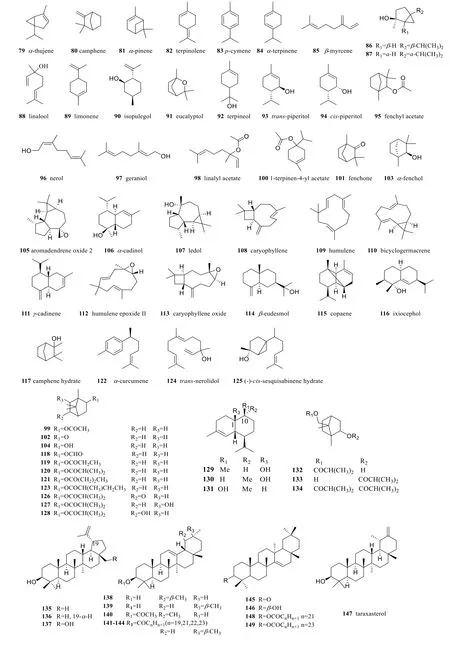
Figure 4 Chemical structures of terpenoids from the genus Strobilanthes.
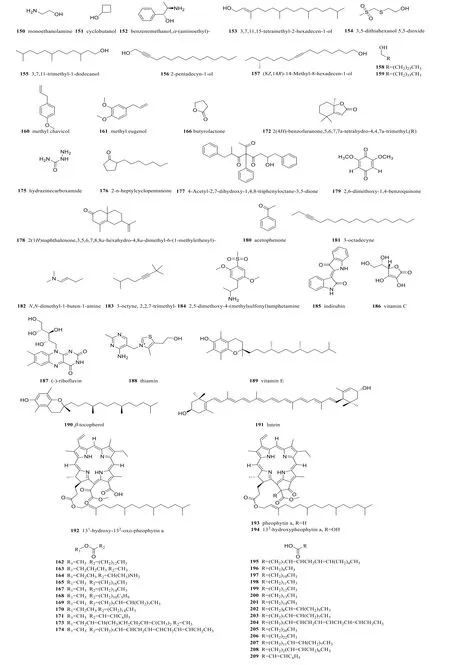
Figure 5 Chemical structures of other constituents from the genus Strobilanthes.
Pharmacological activity
The antitumor activities of the genusStrobilanthes,encompassing antibacterial,antioxidant,and antiinflammatory properties have been reported in several studies.Anyway,studies on the activity of this genus are mainly focused on the activity of extracts,therefore,it needs to be further studied.Overall,the various pharmacological properties reported fromStrobilanthesspecies have been summarized in Table S1 and are detailed below.
Antitumor activity
S.crispushas selective cytotoxicity against many cancer cell lines including cervical cancer,liver cancer,colon cancer [97,98] and breast cancer cell lines [90].S.crispusinhibits migration,invasion and metastasis in breast cancer[90].The action ofS.crispuson breast cancer was studied through integrated computational and experimental analyses [92].S.crispusstem hexane extract has potential in treating liver and breast cancer,which exhibited the highest potency with the lowest IC50values in mediating HepG-2 and MDA-MB-231.The IC50value obtained from HepG-2 cells (38.8 μg/mL) was comparable to the commercially available anti-cancer drug,5-Fu (IC50,37.3 μg/mL).The IC50determined in MDA-MB-231 cells,42.5 μg/mL was 1.4 times lower compared with the 5-Fu (IC50,60 μg/mL) [93].Extracts ofS.crispusleaves from Kelantan exhibited potent anticancer activity with IC50of 182.5 μg/mL compared to that of extracts of Selangor (IC50=266.4 μg/mL) and Penang samples (IC50=331.5 μg/mL)and compared to tamoxifen (IC50=63.4 μg/mL) [73].Doxorubicin (Sigma,USA) was used as the positive control with an IC50value of 30.0 μg/mL,S.cripusethanol extract exhibited anti-proliferative effects in hormone dependent human breast adenocarcinoma MCF-7 cells,as indicated by a decrease in the percentage of detected cells with BrdU incorporation [94].S.cripusjuice was found to inhibit the proliferation of HepG2 cancer cell lines by Faridah Hussin et al [95].N.A.Norfarizan-Hanoon et al.confirmed the non-toxicity ofS.crispusjuice [96].Research has shown thatS.crispusleaves growth inhibitory effects are similar to that of the antiestrogen,tamoxifen [34].S.crispusleaves extracts also have inhibitory effects on reverse transcriptase of RNA tumour virus [98].The total phenolics content (TPC) of methanol extract ofS.crispuswas the highest than other samples includingCasearia capitellata,Baccaurea motleyana,Phyllanthus pulcherandStrobilanthus crispus(P<0.05)among all the extracts analyzed by Maznah et al.study,it was observed that the ethyl acetate extract ofS.crispusflower was more active than the ethyl acetate extract ofS.crispusleaf against HT-29 cell lines,with IC50values of 42.0 μg/mL and 70.2 μg/mL respectively,on the basis of MTS test [100].There was a finding demonstrated for the first time that F3 is capable of activating the immune system in rats-bearing NMU-induced mammary tumor,which may contribute to the anticancer effects of F3 [101].In conclusion,the genusStrobilantheshas an effective antitumor effect,and helps to improve the quality of life.It is worthy of further promotion for its high security.
Antimicrobial activity
Indigo naturalis prepared fromS.formosanusMoore also have antimicrobial effects [102].The crude methanolic extract ofS.urticifoliaWall.ex Kuntze possesses potent haemagglutination and antibacterial activities antibacterial activity,the MIC values for most bacteria,such asEscherichia coli,Staphylococcus aureus,Salmonella typhi,Micrococcus luteusand so on are 2.0 mg/mL,amoxicillin was used as positive and DMSO as negative control [103].Profound antibacterial activity was observed of all theS.kunthianaleaf extract,leaves can also be used to treat intermittent fever [45].S.crispus’ s dichloromethane extract showed intense inhibitory activity againstBacillus subtilis(31.0 μg/mL) and Gram-positiveStaphylococcus aureus(15.6 μg/mL),and moderate effect against Gramnegative bacteria with a MIC value of 62.5 μg/mL.Among the components isolated from the dichloromethane extract,compounds 146,148 and 149 showed effective inhibitory activity againstStaphylococcus aureus,with MIC value of 15.6 μg/mL,almost twice as many as positive control Gentamicin whose value showeda 7.8 μg/mL.However,methanol extract and compound 177 showed excellent inhibitory activity againstBacillus subtilisandStaphylococcus aureus,with MIC values of 15.6 μg/mL and 7.8 μg/mL,respectively.Gentamicin (control) also showed 7.8μg/mL againstStaphylococcus aureus.The methanol extract and compound 177 were found to have selective activity againstEscherichia coli,Salmonella typhimuriumandKlebsiella pneumoniae(Gram-negative bacteria),with MIC values ranging from 31.0 μg/mL to 62.5 μg/mL,suggesting that the presence of compound 177 may be responsible for the good inhibitory potential of methanol extract against the tested strains [84].Sharifah Raina Manaf et al.demonstrated thatS.crispusacted on aquatic bacteria,andS.crispusas environmental friendly therapeutants as they showed no side effect in the intended fish [104].Therefore,the biological activity tests and toxicity evaluation are required for the further development of new drugs against bacterial and fungal diseases.
Antioxidant activity
Free radicals,including reactive oxygen species (ROS) and nitric oxide,are highly reactive byproducts of oxidation and biochemical reactions in human cells [105],with deleterious effects that lead to the cell injury and death.Lipids,carbohydrates,proteins and DNA are the major target molecules for attack by free radicals.It is concluded thatS.crispusinhibits peroxidation of membrane lipids and DNA damage induced by Fe-NTA and H2O2and possesses the potential to be used to treat or prevent degenerative diseases where oxidative stress is implicated[105].Suhailah et al.studied the antioxidant activity of selected Malaysian plants includingS.crispusbased on plants’ TPC.The DPPH free radical scavenging results of the positive control (Gallic acid) andS.crispus’ aqueous extract are 88.8%,28.5% respectively.Their findings indicated the ethanol extracts showed a higher scavenging percentage than the aqueous extracts of selected Malaysian plants and a positive correlation between TPC and DPPH for ethanolic extract,R2=0.7611 [107].Obviously,extracts of different solvents not only have different natural products,but also have very different activities.For example,S.crispusfrom the three different locations when extracted with two solvents (aqueous and ethanol extracts)yielded significantly different results for total phenolics content (TPC),total flavonoids content (TFC),and total saponins content (TSC) as well as for the antioxidant activity [73].The highest DPPH free radical scavenging activity was observed in the aqueous extract ofS.crispusleaves from Kelantan (73.8 %) followed by Selangor(62.4 %) and Penang (54.6 %) at a concentration of 100 μg/mL,with the IC50of 44.1,58.2,and 78.3 μg/mL,respectively compared to BHT (37.5 μg/mL) and αtocopherol (26.4 μg/mL) [73].Strobilanthes erectusCl.ex Hoss also have a weak antioxidant capacity [107].The antioxidant components of the genusStrobilanthesinclude phenols (1-14),flavonoids (15-27).The results would provide useful information and reference for prevention and treatment of diseases caused by oxidative stress in the future.
Acetylcholinesterase enzyme inhibitory activity
Compounds with IC50inhibiting acetylcholinesterase enzyme activity ≤ 50 μg/mL are considered actively.Among the isolated compounds fromS.crispusby Yen Chin Koay et al,compound 177 showed the best anticholinesterase activity (86%) with an IC50value of 31.0 μg/mL,followed by compound 146 (88%) and compounds 148 and 149 (78%) with an IC50value of 42.0 μg/mL and 44.0 μg/mL,respectively.The inhibitory rate and IC50value of galanthamine (positive control) at 5 μg/mL were 92% and 2.3 μg/mL,respectively.Observed biological activity results further showed that theS.crispusas the traditional use of antibacterial agent and used to treat some diseases associated with central nervous system and,if compound 177 was used as a template for synthesis of different analogues,could research on antibacterial and acetylcholinesterase inhibition to make useful contributions [84].
Anti-inflammatory activity
S.formosanusMoore grows in the mountains near Sanxia in Taiwan.S.formosanusMoore and other plants were processed into indigo naturalis (QD),a dark blue powder[108].S.cusia(Nees) Kuntzeare is also one of the main sources of indigo naturalis [110].In traditional Chinese medicine (TCM),indigo naturalis has been used commonly for treating various infectious and inflammatory skin diseases [102].Indigo naturalis could suppress TNF-α-induced VCAM-1 expression via inhibition of AP-1/c-Jun activation in primary cultured HUVEC,a phenomenon that may explain the decreased infiltration of T cells in indigo naturalis treatment contributing to its anti-inflammatory therapeutic effect in psoriasis [111].Lin et al.investigated the possible antiinflammatory effects and mechanisms of QD and its main components indirubin,indigo and tryptophan in human neutrophils.The results indicated that QD significantly inhibited the release of O2·-and elastase in FMLP/CBactivated human neutrophils in a concentration-dependent manner [111].Research proved thatS.callosusleaves extract had an effect on inflammation on the rat model [30].In short,these findings suggest their potential of further evaluation and development as effective therapeutic agents for inflammatory diseases.
Other activities
Y.F.Yong et al.evaluated inhibitory potency (IC50,Ki and mode of inhibition) of known CYP inhibitors andS.crispusextract forin vitroscreening of drug-drug interaction (DDI) and herb-drug interaction (HDI)involving tamoxifen (TAM) metabolism usingin vitrocytochrome P450 inhibition liquid chromatographymass spectrometry/ mass spectrometry (IVCI-LC-MS/MS) and a li-quid-liquid extraction (LLE) method [113].Besides,S.crispusleaves extract may be attributed to the anti-obesity effects found on treated diet-induced obese (DIO) rats in part [114].Strobilanthes japoniciis a dicotyledonous plant medicinal acanthaceous family plant,with the whole grass into medicine,with soothing liver and relieving depression,promoting the blood circulation and removing stasis and other effects [115].Eun-Mi Choi et al.investigated the effects of 75 Indonesian medicinal plants on NO release and free radical scavenging in macrophages [116].Sincy Joseph et al.work revealed thatStrobilanthes cuspidatahas anti-diabetic activity in alloxan induced diabetic rats[117].S.crispusaqueous and ethanolic leaves extracts have antitrypanosomal activity [118].CH2Cl2extracts from some plants of this genus have anti-plasmodium activity and cytotoxic activity [119].The in vivo study revealed that theS.ciliatusextract has analgesic activity[120].The leaf extract ofS.discolorpossesses significant anticestodal property [42].Strobilanthes hamiltoniana(Steud.) Bosser and Heine,is commonly used in the traditional systems of medicine against helminthiasis and spider bite poison [46].Strobilanthes bantonensisis an antiviral herb in the border areas between China and Vietnam.Local people call it ‘Purple Ban-lan-gen’ because its root is very similar to that ofS.cusia(Nees) Kuntze.The two species have been used interchangeably locally,and Wu et al.found thatS.bantonensisis closely related to theS.cusiausing chloroplast genome sequencing method[13],which may explain their similar pharmacological activities.However,the above results are not even satisfactory enough.Therefore,it is necessary to further their pharmacological mechanism and clinical value.
Structure-activity relationship
The 3 position of compound lupeol is the active modification site,Shengxiang Qiu isolated compound lupeol fromS.forrestiiand chemically synthesized it to get two compounds.These two compounds used AZT as the positive control,and their therapeutic indexes were 200 and 2375,respectively,with IC50value of 0.8 and 0.04μM respectively,showing strong anti-HIV effectin vitro,and maybe developed into anti-HIV drugs from natural sources[121].Several studies have assessed the relationship between the anticancer activity of plant extracts and their phenolic content.Previous studies have shown that the structural oxidation state of polyphenol compounds is correlated with the location,quantity and properties of substituents and their anticancer effects.The effect of phenolic compounds on the cell cycle may contribute to the killing of tumor cells.Extracts with high anticancer activity do not necessarily have high phenolic components,this suggests that the properties of phenols,rather than their quantity,determine these activities [100].S.crispusextract has certainin vitro photo-cytotoxic activity [122],this suggests that a cyclic tetrapyrrole structure compounds may be present in this genus.In a word,the further in-depth investigations on the stereo-chemistry and structureactivity relationships of pure compounds from this genus will be essential in the future.
Conclusion
The plants of the genusStrobilanthesare mainly found in Malaysia and Indonesia and widely used as a traditional medicine for a variety of purposes.This review systematically summarizes the phytochemistry pharmacology and the traditional applications of the genusStrobilanthes.There are also some innovative studies on the isolation methods of this genus.Angelina et al.used ultrasound-assisted enzymatic extraction (UAEE) to isolateS.crispusleaves [122,124].Researchers used 2DIR spectroscopic technique to classify 13 herbal leaves includingS.crispa[125].Based on starch-iodine agar plate,Yang et al.studied extracts of 100 traditional Chinese medicines including this genus plants to screen forβlactamase inhibitors [126].Pharmacological studies have delineated that these plants and ingredients have a variety of biological activities,especially anti-cancer,antioxidant,anti-inflammatory and anti-liver disease and so on.In addition,Balachandar Vellingiri et al.introduced the Indian traditional medicinal herbs which may be a beneficial step to combat viruses like the SARS-CoV-2.For example,S.CusiaandS.callosa[127] blocked the viral RNA genome synthesis and induced papain-like protease activity targeting the HCoV-NL63 (Human coronavirus NL63) [128].This suggests that the medicinal plants of the genusStrobilanthesmay be a potential research target for the treatment of Coronavirus disease 2019 (COVID-19) caused by the severe acute respiratory syndrome coronavirus 2 (SARS-CoV-2) virus [128-133].
Many studies onStrobilanthesspecies have long concenfocused on their phytochemicals and biological effects,but there are still numerous gaps in understanding the scientific implications,traditional medicinal application,and pharmaceutical trials for discovery of new medicines.Several pharmacological studies trated simply on crude extracts while the individual phytoconstituents linked to the biological activities are still unknown.In addition,other valuableStrobilanthesspecies related to ethnobotany,phytochemistry,and pharmacology should be studied further to ascertain whether the traditional therapeutic claims are related to pharmacological properties or solely based on folklore.What’s more,studying genomic datasets of species can help us understand the taxonomy and phylogenetic position placement across the related species [134].However,considering the safety and action mechanism of these plants,further research is still needed.It still requires more conclusive studies on the safety,efficacy and in vivo toxicity of extracts and pure compounds from the genusStrobilanthesto gain a better understanding on this genus.
Data availability or Code availability
Supplementary data are available online at TMR Modern Herbal Medicine.
Abbreviations
ITS,internal transcribed spacer;cp genome,chloroplast genome;PHF,polyherbal formulation;SCBE,S.crispus(B.) leaf extract;GAG,glycosaminoglycan;IAA,indole-3-acetic acid;SC-CO2,supercritical carbondioxide;AOM,azoxymethane;ACF,aberrant crypt foci;MIC,minimum inhibitory concentration;TPC,total phenolics content;ROS,reactive oxygen species;IC50,half maximal inhibitory concentration;QD,indigo naturalis;TCM,traditional Chinese medicine;DDI,drug-drug interaction;HDI,herb-drug interaction;TAM,tamoxifen;LLE,liquidliquid extraction;DIO,diet-induced obese;UAEE,ultrasound-assisted enzymatic extraction;HCoV-NL63,human coronavirus NL63;TFC,total flavonoids content;TSC,total saponins content;TLC,thin layer chromatography;UV,ultraviolet;HPLC,high performance liquid chromatography;XRD,X-ray diffraction;UHPLC,ultrahigh pressure liquid chromatography;IR,infrared spectroscopy;GC MS,gas chromatography mass spectrometry;TOF,time of flight mass spectrometer;1H-NMR,proton magnetic resonance;ESI,electron spray ionization;13C-NMR,carbon-13 nuclear magnetic resonance;HMBC,1H detected heteronuclear multiple bond correlation;DEPT,distortionless enhancement by Polarization transfer;IVCILC-MS/MS,in vitro cytochrome P450 inhibition liquid chromatography mass spectrometry/ mass spectrometry.
Acknowledgments
The authors thank the National Natural Science Foundation of China (NSFC) (No.82141216),Chunhui Program-Cooperative Research Project of the Ministry of Education,Liaoning Province Natural Science Foundation(No.2020-MZLH-31),China Postdoctoral Science Foundation (No.2021M693957),Shenyang Young and Middle-aged Innovative Talents Support Program(RC210446),and Project of the Educational Department of Liaoning Province (No.LJKZ0919) for financial supports.
Author contributions
Xiao-Ling Zhu: Collected the literature,Drew structures,Wrote the manuscript.Yang Xu: Collected the literature,Drew structures,Checked the Tables and Figures as well as grammar of manuscript.De-Juan Sun: Provided valuable suggestions and revised the manuscript.Hua Li:Provided valuable suggestions and revised the manuscript.Li-Xia Chen: Provided valuable suggestions and revised the manuscript.All authors read and approved the final version for the manuscript.
Competing interests
The authors declare no competing interests.
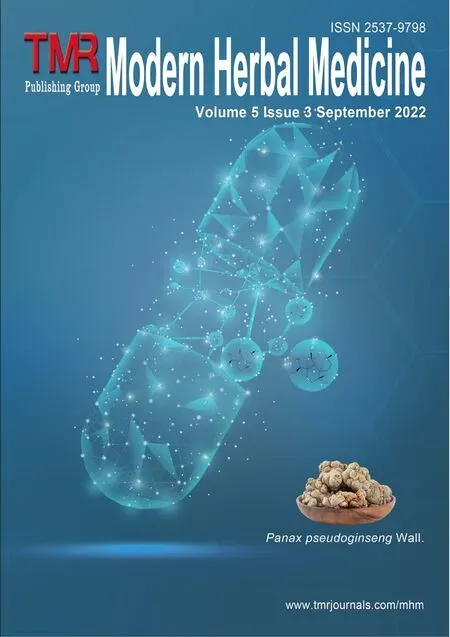 TMR Modern Herbal Medicine2022年3期
TMR Modern Herbal Medicine2022年3期
- TMR Modern Herbal Medicine的其它文章
- Traditional Chinese medicine as monotherapy or combined with oseltamivir in the treatment of H1N1 influenza: a systematic review and meta-analysis
- Niaoduqing granules inhibits TGF-β1-induced epithelial-mesenchymal transition in human renal tubular epithelial HK-2 cells
- Standardization and Quality control parameters of Kayam Churna
- Effects of Euphorbiasteroid on gene expression in lung cancer cells based on gene chip
- A review of the ethnobotanical value,phytochemistry,and pharmacology of Physalis pubescens L.
